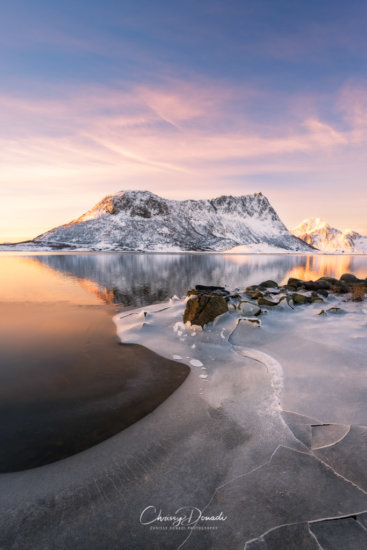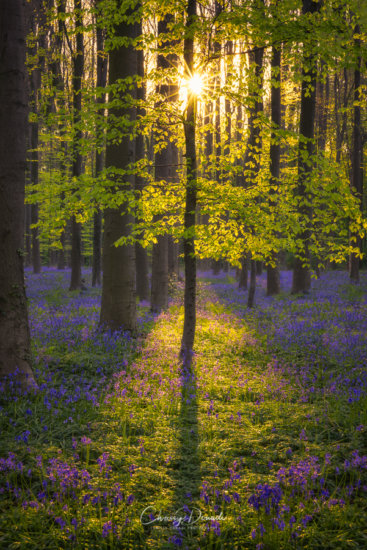6 Ridiculously Simple Tricks for Sunrise Photography
When people ask if you prefer shooting sunrise or sunset, I find that I tend to be in the minority when I definitely reply “sunrise!” Sure, you literally have to get out of your warm bed before the sun sheds its first beam on the land. Often, you may have to repeat the same hike multiple times until perfect conditions align. Sunrise photography may seem like a lot of work and you are thinking that you want to sleep in, but hear me out.
Mornings are usually hectic and rushed where the only moment of joy may be a cup of coffee. If you dread mornings, then sunrise photography is the key to looking forward to morning’s early light. It is incredibly refreshing to take a quite morning drive or walk to a beautiful destination. In those couple hours, you can enjoy the peaceful solitude. Watch color dances across the clouds and experience that small part of the world waking from its slumber. It will breathe new life into your soul and reset your mood for a while. Take a chance and follow these 6 ridiculously simply tricks to make the most out of your sunrise photography.

1. Scout the Location
For sunrise, you need to be read in the right place at the right time. At least, I haven’t figured how to make the sun hit the snooze button. So there is no choice but to go to the desired location in broad daylight. Yes, take a scouting trip and spend some time finding interesting compositions. Study the sun’s position and determine if that location and composition are suitable dawn compositions. Based on the time of year and the sun’s position, you may find that your favorite composition is better at sunset.
Next, figure out how long it will take you to get to the location. Take into account that you will need to get there in the dark with probably only a headlamp leading your way. I like to include some buffer time to account for any delays as well as make sure I have a thermos of hot coffee (this is a waiting game after all).
2. Straighten your Horizon
While you are looking for interesting compositions in daylight, consider where the horizon falls in your image. Would placing the horizon lower in the frame and allowing more sky lead to a more interesting shot? Once you know where you want the horizon placed within the image, make sure it is straight. There are few times where I feel that this rule should be broken in landscape photography. If this rule is broken, then it should be deliberate. It is worth the effort and many cameras have built in features to aid in this effort.

Patagonian sunrise at the end of Blue Hour
3. Set Your Alarm
The last planning step is to determine the precise sunrise times for your exact location. There are plenty of options to help you determine when to set your alarm. A few include checking the National Weather Service, Photographer’s Ephemeris, or Photo Pills.
Personally, I prefer to arrive at a location for blue hour, when nautical twilight ends and civil twilight begins. This will allow you to start photographing with deep blue hues in the sky as nautical twilight ends. Then you can seamlessly shift into civil twilight, where there is enough natural light to see the landscape along with golden colors if weather conditions cooperate. Afterwards, the golden hour may give way to golden tones of red, orange, and yellow. Once the color in the sky fades (or fails to show completely), the sun is still low in the sky. The light is normally soft with little contrast. This is the time to be more creative and play with the soft light or even wait for the sun beams to burst onto the scene.
Being on site that early allows you to see where the clouds are likely to be at the time of sunrise. In turn, you can position yourself to get the best shot based on the conditions before the sun peeks over the horizon. You can be more proactive instead of reactive with your images.

The sun piercing through a forest of spring bluebells
4. Setting Starting Points
Since sunrise photography will start as a low light situation, a tripod is essential to ensure images are sharp because exposure time will be longer. Unless I am purposely trying to capture a very long exposure, I set my camera to aperture priority mode. This means I determine the ISO and aperture. Then, the camera will choose the shutter speed based off of those inputs.
To maximize the depth of field, try startingwith an aperture such as f/8 or f/f11. This will improve sharpness throughout the entire composition, assuming no foreground element is too close to the lens. If settings allow, try to use a low ISO value (e.g. 200)to reduce noise.Take a sample image, check for proper exposure, and ensure all parts of the image that should be in focus are in focus. If the photo isn’t as you desired, adjust those settings until you photo is what you want to showcase to the viewer.

The golden hour lighting up the Patagonian mountains
5. Expose for Highlights
Overexposed highlights will show bright white in your sky, meaning there is no detail recorded. To avoid losing data in a totally white area of the image, most cameras allow you to turn on a highlight warning feature which will show “blinkies” on the parts of your photo which are blown-out (overexposed). The warning will also show underexposed sections where everything is completely dark with no image detail. No all “blinkies” are bad. For instance, if you are capturing the sun, the center part of the sun will always be a “blinkie.”
Since the landscape is transition from dark to light, more than likely, there will be a high contrast. Therefore, you will have a large dynamic range to capture. Two ways to ensure you capture the entire dynamic range of the scene is to bracket your image or use a graduated neutral density filter.

Sunbeams shooting through the forest
6. Take It In & Look Around
The sun may be rising in the east but look all around you for colors and potential compositions. Every now and again, pull yourself away from that viewfinder to see if anything spectacular is happening around you. Moreover, pause to enjoy and experience the scene. Take the time to really see and feel the experience. Not only will you appreciate that moment, it will help you remember and re-create that same experience when post-processing sunrise photography images.



